Home / Chapter 5: Microscopic Particles
Intro
Energy Filament Theory (EFT) does not require new, heavy, ubiquitous, stable particles to explain “extra gravity.” However, the filament–Sea–tension dynamics naturally allow several electrically neutral, weakly coupled, topologically protected, long-lived configurations to form in specific environments and remain hard to see. Any such candidates must respect two observational constraints: they must not upset Big-Bang Nucleosynthesis and the Cosmic Microwave Background (CMB) budgets, and they must remain consistent with the “invisible/untouchable” outcomes of terrestrial searches. With that premise, EFT predicts several “easy-to-form, hard-to-find” stable (or ultra-long-lived) configurations, with concrete construction pictures, likely locales, search handles, and potential uses.
I. Neutral Light Ring N0 (minimal closed loop, near-field self-cancellation, ultra-weak coupling)
- Construction: one energy filament closes into a single ring with finite thickness; a phase front runs inside and remains phase-locked. Near-field orientations cancel pairwise to enforce electrical neutrality; only a very shallow far-field basin remains.
- Why stable: topological closure + phase locking sustain the ring so long as external tension stays below a threshold.
- Where abundant: cold, tenuous molecular clouds; outer galaxy halos; cooled shells at the ends of AGN jets—locales with low collision rates and minimal reprocessing.
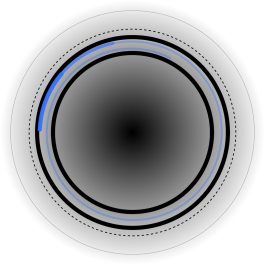
- Collective behavior / combinations: large ensembles add to a smooth weak-inertia floor; shear–reconnection triggers can pair N0 into L2 (interlocked double ring) or assemble sparse “ring arrays” via phase cooperation.
- How N0 differs from a neutrino: N0 is a filament ring with a finite-thickness band and near-field electric cancellation; a neutrino is an ultra-thin phase band with essentially vanishing near field and fixed chirality.
II. Interlocked Double Ring L2 (Hopf link, higher topological barrier)
- Construction: two closed rings interlock in a Hopf link; each carries a phase front; the whole object is electrically neutral.
- Why stable: the linking number adds a topological gate; unlocking requires reconnection and a higher energy barrier.
- Where abundant: magnetar magnetospheres; high-shear layers near AGN cores; high-tension shells left by mergers.

- Collective behavior / combinations: L2 swarms can form sparse “chain-nets” that increase local shallow-basin viscosity; further reconnection can grow B3 (Borromean triple) or fracture back into N0.
III. Borromean Triple B3 (remove any one ring → the rest fall apart; third-order stability)
- Construction: three closed rings interlink in the Borromean pattern; breaking any single ring frees the other two; overall neutrality is preserved.
- Why stable: the trio mutually borrows stability and sits in a deeper local minimum, more disturbance-resistant than L2.
- Where abundant: annealing phases after mergers; cooling islands during supernova shell refill.
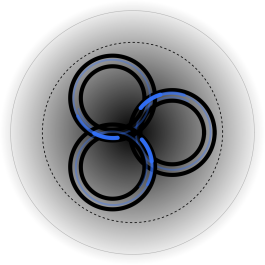
- Collective behavior / combinations: B3 can host additional N0/L2 as a core to build multi-tier skeletons; a population increases local guiding and echo lifetimes.
IV. Micro-Bubble MB (tension shell + Sea pressure; neutral Q-ball–like cluster)
- Construction: a small parcel of the Sea is sealed by a higher-tension shell, forming a seamless micro-bubble; overall neutral appearance.
- Why stable: shell tension balances inner/outer Sea pressure; absent puncturing reconnection, lifetimes are extremely long.
- Where abundant: jet termini with large throughput; pressure pockets in the intracluster medium; tension corrugations at void boundaries.
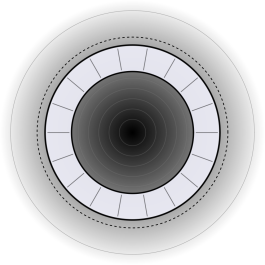
- Collective behavior / combinations: many MBs can form soft-core clusters; contact with N0/L2 can build “core–shell composites” (shell outside, ring core inside).
V. Magnetic Ringlet M0 (neutral, toroidal flux, strong-magnetic/weak-electric)
- Construction: a neutral closed ring traps quantized toroidal flux—equivalently, a compact phase wind-back. It may lack a material filament core; the core is the toroidal channel of the tension/phase field itself.
- Why stable: flux quantization and phase-lock resonance erect a barrier; destroying M0 requires cutting phase continuity or venting flux—costly operations.
- Where abundant: magnetar magnetospheres; near strong current filaments; ultra-intense laser–plasma micro-domains.
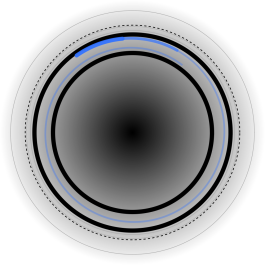
- Collective behavior / combinations: clusters can form micro-magnetized networks or low-loss self-inductance arrays; pairing with L2/B3 yields “magnetized skeletons.”
- How M0 differs from N0: N0 has a filament core with near-field electric cancellation; M0 can be coreless with a defined magnetic-flux channel, favoring tiny magnetization/self-inductance signatures (still bounded by current experimental limits).
VI. Dual-Ring Neutral D0 (coaxial ± rings cancel; positronium-torus analog)
- Construction: an inner negative ring plus an outer positive ring share an axis and a cooperative binding band; inward/outward near-field textures cancel, leaving net neutrality.
- Why stable: phase counter-locking suppresses radial leakage; strong agitation can trigger deconstruction → γγ, making D0 mostly metastable.
- Where abundant: strong-field cavities; dense e⁻–e⁺ plasmas; magnetar polar caps.
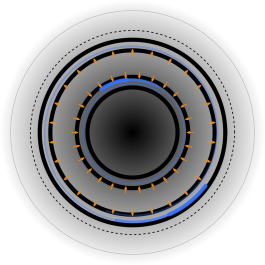
- Collective behavior / combinations: many D0s enhance local electrostatic screening and nonlinear refraction; D0s can seed more complex ring–shell composites.
VII. Gluonic Torus G⊙ (closed color channel with a sliding gluon packet)
- Construction: a closed color-filament conduit forms a ring; gluon packets slide tangentially along the conduit; no quark endpoints.
- Why stable: a closed color flux lowers endpoint penalties; bending/contracting must cross a barrier, so G⊙ is metastable.
- Where abundant: late cooling in heavy-ion collisions; dense-star crusts; phase-transition fronts in the early universe.

- Collective behavior / combinations: G⊙ populations may support short-range coherence channels that measurably tweak nuclear-matter micro-viscosity and micro-polarization; mixing with L2/B3 yields “color–neutral composite skeletons.”
VIII. Phase Knot K0 (trefoil phase knot; ultra-light, neutral)
- Construction: the phase field itself ties a trefoil (homotopy) knot without a thick ring; net electric and color charges are zero, leaving only the shallowest basin.
- Why stable: homotopy class conservation; strong reconnection is needed to untie; couplings to standard probes are extremely weak.
- Where abundant: early-universe phase transitions; strong turbulence–shear layers; engineered micro-cavities for phase control.

- Collective behavior / combinations: swarms raise a weak “phase-noise floor” and can serve as lightweight filler inside B3/MB frameworks.
IX. Reader Navigation and Boundary Notes
- Point-like limit: under high energy / short windows, the shape factors above collapse toward point-like behavior; the drawings do not imply a new “structural radius.”
- Visualization ≠ new numerics: terms like “expansion,” “channel,” “packet,” or “knotting” are intuitive; each must reconcile with measured radii, form factors, parton distributions, spectral lines, and existing limits.
- Search for tiny biases: environment-induced micro-shifts, if present, must be reversible, reproducible, and calibratable, and remain below current uncertainties and bounds.
X. Why They Might Be “Common Yet Ignored”
- Neutrality, near-field self-cancellation, weak coupling → standard charged/strong/spectral probes rarely trigger on them.
- Environmental selectivity: they accumulate in cold, tenuous, low-shear—or extreme but annealed—settings; colliders and everyday matter are not their homes.
- Signal looks like background: astronomical appearances are weak achromatic floors, ultra-low-convergence lensing biases, or faint polarization twists—often filed away as “systematics.”
In Summary
These filamentary “knots” are not required to exist, yet under EFT’s low-cost, self-support, and topological-protection principles they are natural, profile-able candidates. If confirmed and controllably prepared, they could both explain persistent, ultra-weak observational crumbs and act as physical templates for “tension batteries,” “phase-lock skeletons,” and “magnetized primitives.”
Copyright & License (CC BY 4.0)
Copyright: Unless otherwise noted, the copyright of “Energy Filament Theory” (text, charts, illustrations, symbols, and formulas) belongs to the author “Guanglin Tu”.
License: This work is licensed under the Creative Commons Attribution 4.0 International (CC BY 4.0). You may copy, redistribute, excerpt, adapt, and share for commercial or non‑commercial purposes with proper attribution.
Suggested attribution: Author: “Guanglin Tu”; Work: “Energy Filament Theory”; Source: energyfilament.org; License: CC BY 4.0.
First published: 2025-11-11|Current version:v5.1
License link:https://creativecommons.org/licenses/by/4.0/